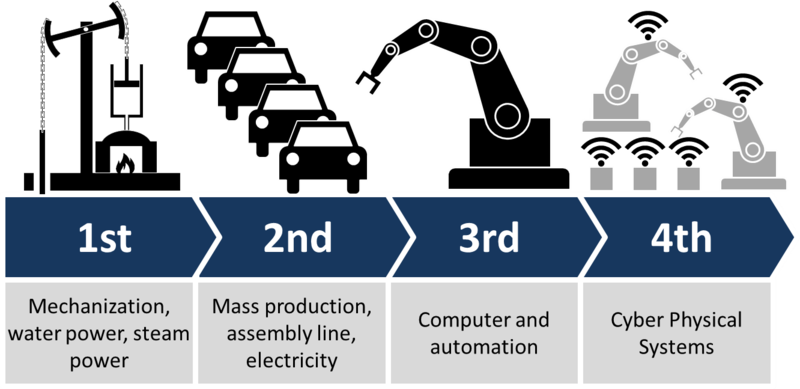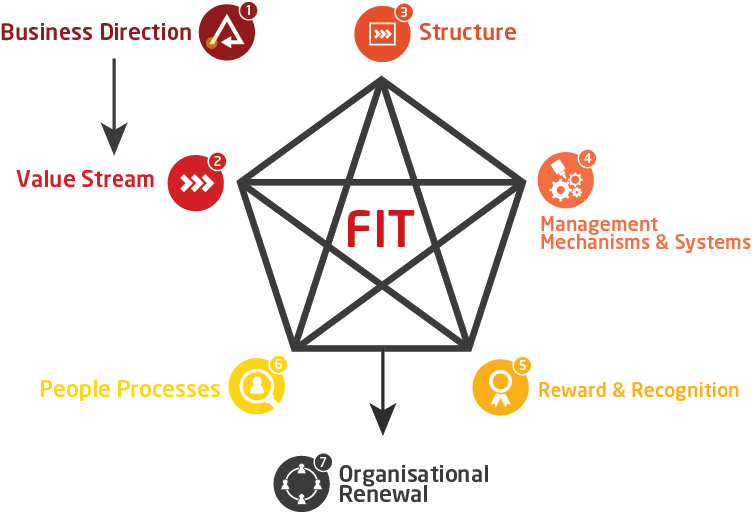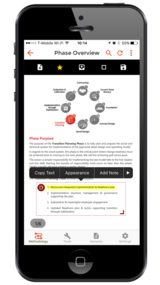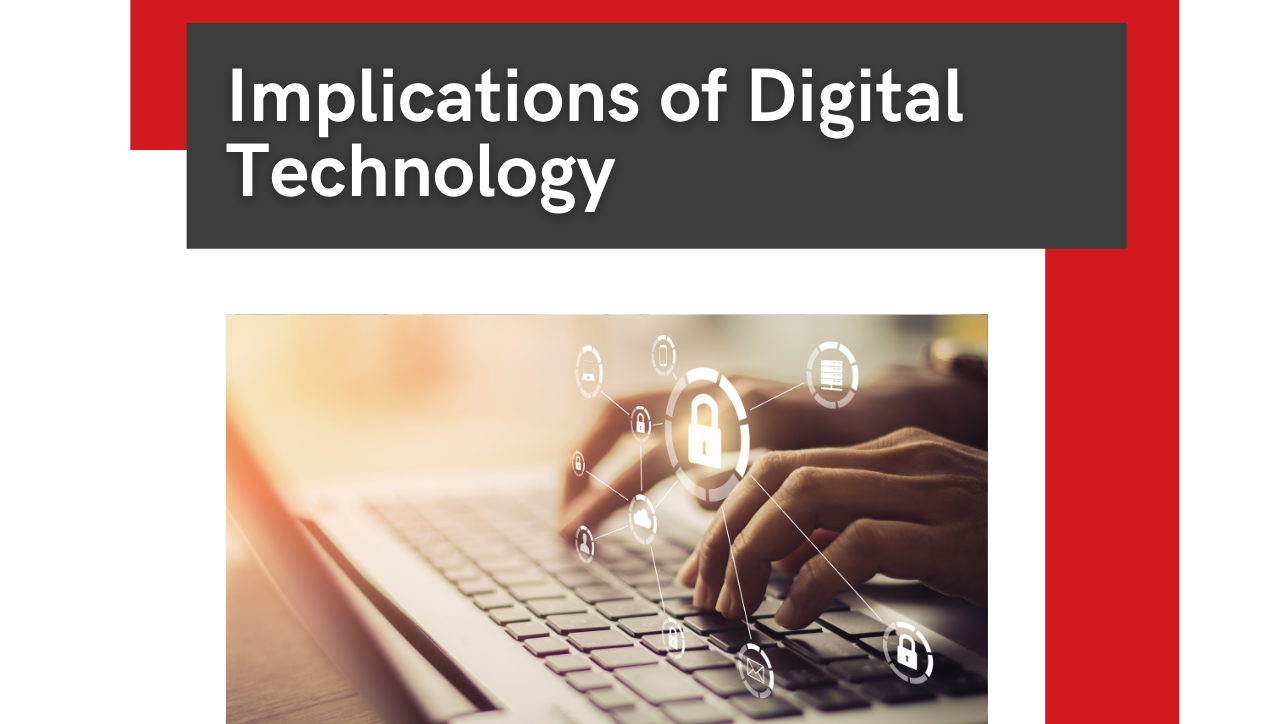We’re at the beginning of the 4th Industrial revolution, yet in the Organization Design world, it feels like we’re still grappling with the implications and impacts of the second and third revolutions. This is merely a reflection of our working environment, particularly for those of us who specialise in enterprise-wide redesigns on a global scale. In these environments, time seems to move slowly or it feels slower than if you’re working with start-ups and medium-sized companies. Organization size, therefore, deeply weighs on the speed of implementation of digital technology for organization design.

Organizational Size and Technology’s Role
Pragmatically, the smaller you are, the easier it is to shift to emergent trends. You’re not bogged down in corporate governance and responsibilities that come with scale. It is a dilemma that we often see at ON THE MARK (OTM): larger companies wanting to behave like smaller start-ups in the hope that they can replicate the magical exponential growth of these organizations.
At the corporate level we often observe what some might assume to be odd behaviours. For example, Google’s decision to chunk up its organization along the letters of the alphabet with the parent company now called, ‘Alphabet’. From an organization design perspective, and from the outside looking in, it can be difficult to ascertain whether this is a stroke of genius; having built or bought lots of disconnected start-up companies. Is their overarching criteria incubation in order to protect the nature of such companies? Or is it just lazy design thinking? Or both? The prevailing order of things would suggest that eventually some of these companies will be merged or integrated in order to deliver additional value as they mature and begin to take on responsibilities and additional cost.
How has Digital Technology Affected the Organization Design Consulting Process?
In today’s world, digitalization is in every aspect of corporate life. It is also an additional differentiating feature of smaller, less established companies. They often use free or low-cost software for both communications and the running of the firm, shaking their heads at larger slower competitors for sticking to traditional providers of enterprise software. However, the problem with younger companies and design thinking is that they can be blinded by their inexperience until they are caught out. It’s no different to children maturing into adults, and is part and parcel of the development models we use in Organization Design thinking in terms of levels of maturity and organization behavior.

Regardless of the nature of the technology, the start of redesign has to be placed within a systems-based model to view the current state of the organization, for example our Applied Star Model (see right). Once this understanding has been established and the right people have been involved in that initial data gathering exercise, then the concept design can be created with the customer value stream and Gravitational Pull providing the overall direction to frame the design within.
At OTM, we approach the design process in different ways depending on the client. For the most part, we argue that it is better to have the system physically in the room together in order to begin the design process. However, our methods have adjusted with time. We provide our service through digital means to clients around the global, including concept and detailed design where it is difficult or prohibitively expensive for the client to bring together the individuals that need to be involved.
For example, one of our recent clients has operations in four continents. Rather than bringing the group together in one physical space to do design work, we convened virtual meetings across three-time zones and used our software applications to work through the detail, chunking the work down into one-hour meetings. The process is slower, however. Practically speaking, having everyone in a room to do design work together is still quicker than virtual means. Still, speed isn’t necessarily always the overriding imperative for organization design work.
Technology Enables Speed, but Faster isn’t Always Better
The typical mantra of our times is that everything is speeding up. However, there are some areas of work where you want people to take their time, where the dangers of making a mistake can be catastrophic. For example, when making changes to some R&D and manufacturing processes, the dangers of changing too fast can outweigh pretty much any imperative to change. Not only from a reputational risk, but more importantly, from a safety risk perspective. There are usually multiple regularity bodies to satisfy as well as your own internal processes.
A good example of regulation is in the design and manufacturing of aeroplanes. No one wants to travel on a plane that has not been rigorously and maliciously thought through, designed, and tested. Changing the organization design of these companies at the corporate level holds little risk to the underlying product delivery. However, changing some of the sub-units or departmental/functional/cross-functional levels could be highly disruptive.

Going slow to go fast is pragmatic in these cases. This makes using digital tools all the more appealing within a global context. The design work can be done at a pace that suits the context (faster or slower) through digital delivery.
Physical Methods or Digital Technology for Organization Design?
Whatever your perspective on digital technology for organization design, the import thing to remember is that the organization design methods must be suitable for the objective you are trying to achieve. Sometimes this means biting the bullet and doing design in physical spaces for expediency. Other times you can use digital tools to leverage the available resources in a different way.
Both digital tools and physical meetings have pros and cons, but it really is a case of thinking through what you are trying to achieve, what is safe and what is useful to the organization context you are operating within. ‘Pay now or pay later’ applies regardless of the tools you employ. It’s still better to be ahead of the curve than behind. This is something we can pride ourselves in being able to help with.
Never miss out on OTM blog updates.
Subscribe to be notified whenever we post.
OTM is the leading global boutique organization design consultancy with offices in the USA and UK. With over 450 successful redesigns and operating model modernizations completed, OTM is owner of the industry’s most integrated, comprehensive and holistic organization design solution. OTM enables its clients to realize their future ambitions.


